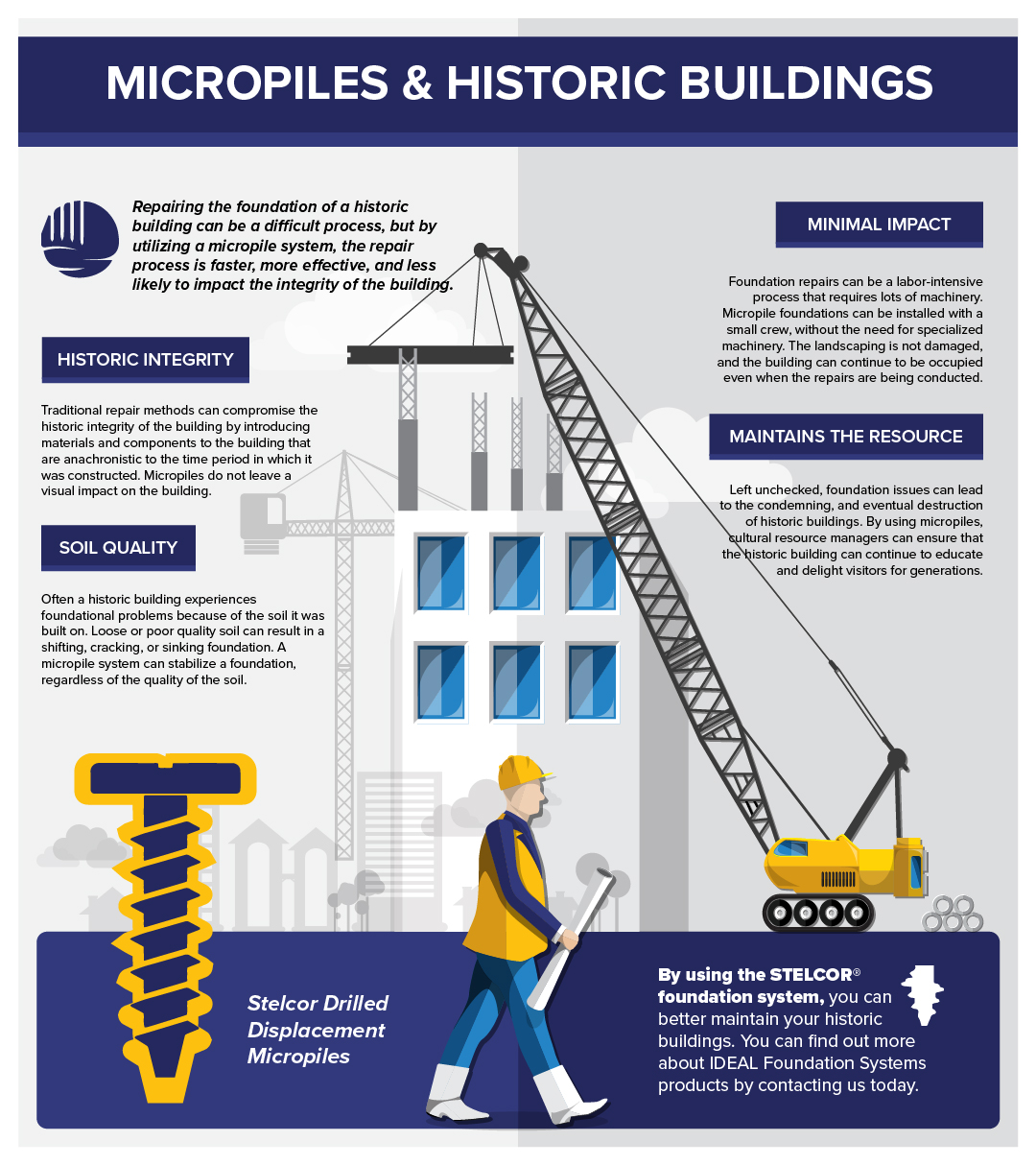Foundational Issues With Historic Buildings
For centuries, the most common materials to create foundations with were stone, rubble, or even wood. For the most part, these foundations do a fine job of keeping the building upright when they are new. With time, however, issues can arise like settling, cracks, and sinking. These issues can affect the integrity of the building overall. On modern buildings, these issues can be resolved through a variety of methods, but historic buildings have unique considerations that need to be taken into account for foundation repairs.
Considerations For Repairing Historic Foundations
Unlike modern homes and buildings, there are special concerns for repairs carried out on historic structures. In many cases, the owner of these buildings are compelled to retain the appearance of the building, thereby maintaining its historic integrity. Simply put, modern foundational repairs can damage the appearance of a historic building, making it look anachronistic to the time period it is meant to represent. The appearance, as well as the structural integrity of the historic building, needs to be maintained.
In other cases, a historic building may have been constructed on, or even moved to, a site with shallow, or poor quality soil. This can make foundation problems difficult, as using heavy machinery can further degrade this soil, making the repairs more difficult.
Micropiles Are Ideal For Historic Foundation Repair
Rather than using anachronistic materials to repair the foundation of a historic building, micropiles can be used to repair the foundation, leaving practically no trace of their use at all. Micropiles can be driven into the soil to support the foundation, and prevent further soil degradation from impact the positioning of the building. Once the micropiles are installed, this can provide a new, and permanent foundation for the building.
In keeping with the historic integrity of the building, there is no need to tear out the soil surrounding the building, ensuring that the context of the building remains intact. This is important because some historic buildings are notable not only for their architecture but their landscaping as well. Destroying the landscaping with heavy machinery can affect the historic integrity of the building.
Additionally, because micropiles can be installed with common construction equipment and a small crew, there is no need for dozens of large machines to crowd the building itself. This ensures that the foundation repair process does not become a distraction from the historic building itself. Typically, the micropile process can be completed fairly quickly, meaning that the machinery and its crew do not leave a lasting impression on the historic building’s visitors and viewers.
Because micropile systems can be installed quickly and easily, occupants can continue to stay in the building even as the foundation is being repaired. This is a boon to historic buildings that rely on tourism to raise funds for its continued maintenance.
Utilize Micropiles On Your Historic Building Repairs
Micropile systems can be used to improve the long-term stability and integrity of historic structures. If you’re in need of a foundational repair system, use our STELCOR® foundation system. These micropiles can be installed easily, and use a grout filling to further stabilize the micropile, and the foundation. These systems remove no soil from the worksite and can be installed using common construction machinery.
Contact IDEAL Foundation Systems to get a quote on our STELCOR® systems, and to find out how to use them on your next historic building repair project.

